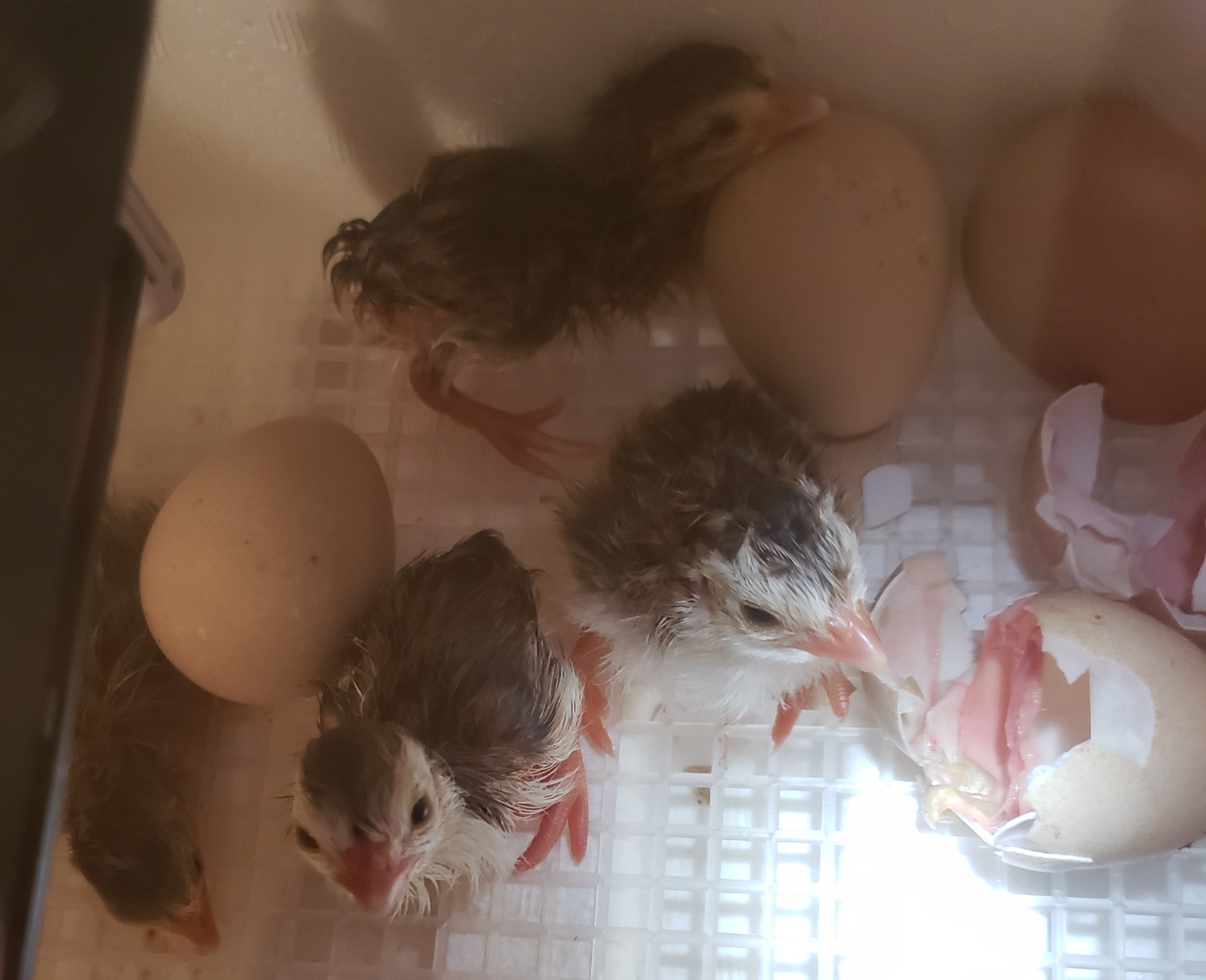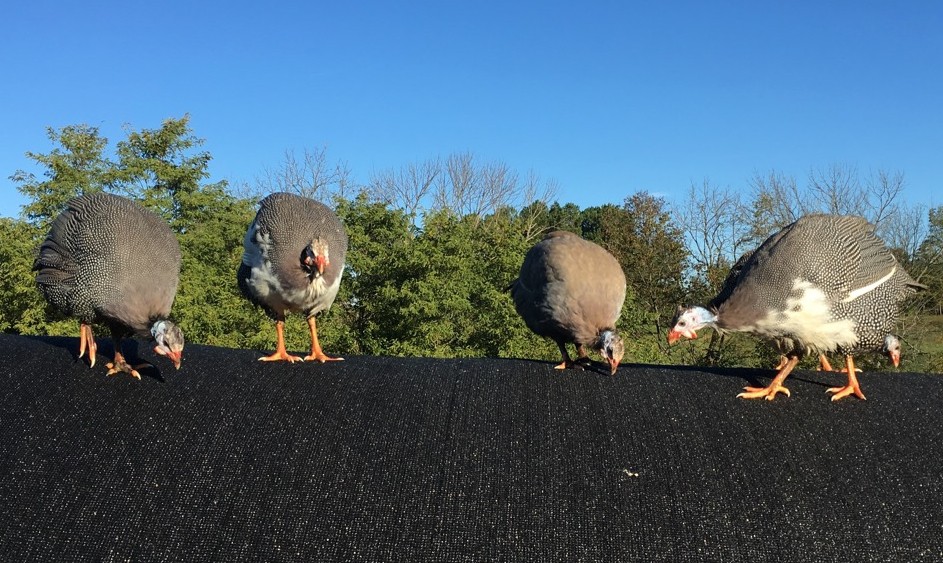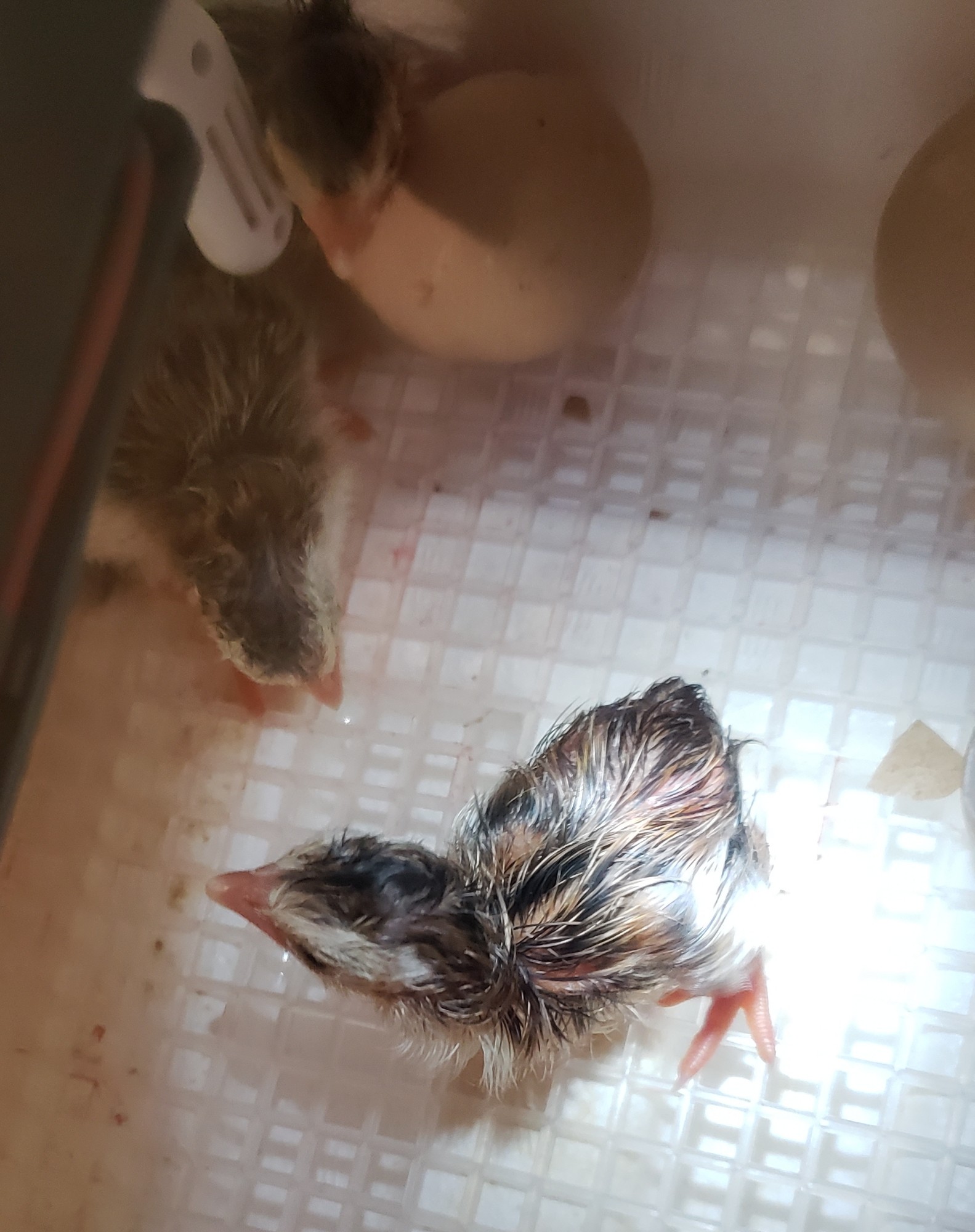
Some people are enchanted by them…but others are less-enamored of the unique, ever-alert guinea fowl. We happen to be big fans (for a number of reasons), and are thrilled that the first group of eggs from our own stock are hatching today!
First: yes, they can be noisy, but it’s part of their charm and their normal social behavior. It’s also how they warn others of danger, and they’re more effective watch animals than our geese – when the guinea fowl sound the alarm, everybody runs. They’re probably not the best choice for suburban backyards, but arguably still less annoying to neighbors than an incessantly barking dog.
Second: yes, they have naked heads with funky little knobs on top and don’t really resemble chickens once they grow out of the keet stage…which is perfectly fine because they’re not chickens. They’re cool, prehistoric-looking creatures.

Third: guineas are reputed to be snake hunters and tick assassins. We’ve never witnessed one attacking a snake, but it’s believable that they could gang up on a snake and do some damage. They’re bug eaters extraordinaire, and the best foragers among our fowl. And we’ve seen no ticks in the areas where they range. Coincidence? Unlikely.
Fourth: guinea eggs are incredibly delicious and guinea hens are excellent layers. They lay more consistently than the chickens and the eggs are rich and creamy.
Guinea fowl eggs take roughly 28 days to hatch. They have very hard shells, so high incubator humidity is important to help facilitate the hatch.

They typically emerge from the shell understandably exhausted, but after a brief recovery period, are ready to get to guinea fowl business. Keets, as guinea fowl young are called, are remarkably talented at finding ways to kill themselves in the first weeks, but after that, they’re very hardy and relatively low maintenance.
While 5 have hatched at this point, there are 6 more yet to emerge. Two days ago, we had a power outage lasting over an hour and a half – bad timing for eggs nearly ready to hatch. The temperature dropped significantly during that time, which could potentially adversely affect the hatch. We’re hoping for the best: a great hatch, healthy keets…and maybe even a slate-colored one?
Interested in the final hatch results? Stay tuned for a blog update!
